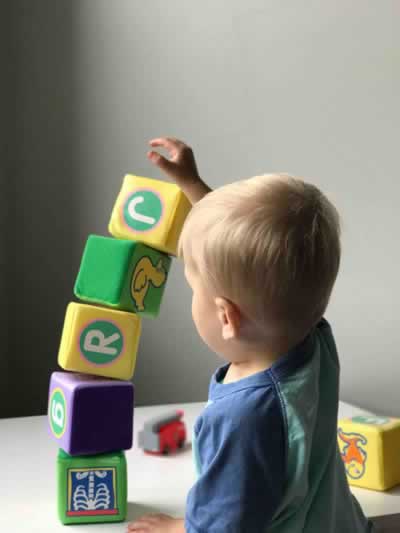If you suspect that your child might have Autism Spectrum Disorder (ASD), then you shouldn’t wait to get more information.
Early diagnosis and intervention lead to much better outcomes than if you wait longer to get an evaluation.
In fact, the earlier the better when it comes to ASD diagnosis.
At the very least, parents can learn to look out for signs. Plus, there are play-based strategies that can help children to improve socialization and relationship skills from a very young age.
The younger the child at the time of intervention, the more likely it is that they will have a lifetime of improved development.
How Early ASD Diagnosis Helps
Research has shown that children who get help early on do much better in the years to come.
Doing better in school (higher IQ levels)
Having better relationships with others
Improved communication skills (i.e. nonverbal children gain verbal skills)
Improved daily living skills
Less cost due to reduced need for intensive therapies as child ages
In fact, some studies have shown that as many as one in four children with an early ASD diagnosis will improve so significantly that symptoms are reduced to the point they are nearly unnoticeable.
Early Diagnosis Helps the Whole Family
Research has also shown that parents working together to raise children with an ASD diagnosis benefit from early intervention.
Parents of children with ASD face many unique challenges. This can put a huge strain not only on the marriage but also impact the whole family’s relationship.
Early intervention can help mitigate or prevent some of the more intense symptoms of ASD. Therefore, early diagnosis can be beneficial for the entire family.
How Early Is Too Early for Intervention?
Signs of autism can become noticeable in children as early as six months of age. However, most specialists won’t make a diagnosis for a child any younger than 18 months. Often, they’ll wait until two years of age to diagnose ASD.
Nevertheless, if you see signs of autism before that age, you can at least get the ball rolling. You can learn what to look for and gain insight into some of the intervention techniques that can help.
Research indicates that children who receive intervention before the age of four have the best outcomes. Ideally, a child will receive a diagnosis around the age of two and begin intensive intervention services.
Intervention Isn’t as Scary as it Sounds
You might hear the word “intervention” and feel a bit overwhelmed. Professionals including speech therapists, occupational therapists, and Board Certified Behavior Analysts (BCBAs) can provide evidence based treatments or therapies for your child. In your role as parent, intervention mostly means just playing with your child. Of course, it’s a bit more intentional and structured than that. However, parental involvement in children’s play throughout the day is a key intervention strategy that truly helps improve outcomes for children diagnosed with ASD.
What to Expect from an ASD Evaluation
You can work with an autism specialist to get an evaluation for your child. This usually begins with an initial consultation during which your child will complete some tests.
Additionally, you as the caregiver will be interviewed about your experience with your child. There is no right or wrong thing to say here. You’re just providing information so that you can get the correct diagnosis for your child.
Following the evaluation, you will receive a report that summarizes the initial session. More importantly, you should get specific intervention recommendations. These are unique to your child’s own needs.
Typically, you then follow up with at-home interventions as well as in-office therapy sessions. This provides both you and your child with support as you work to mitigate the symptoms of ASD.
Of course, each specialist has their own way of working. Contact us today to learn more about our process for early ASD diagnosis and intervention.


